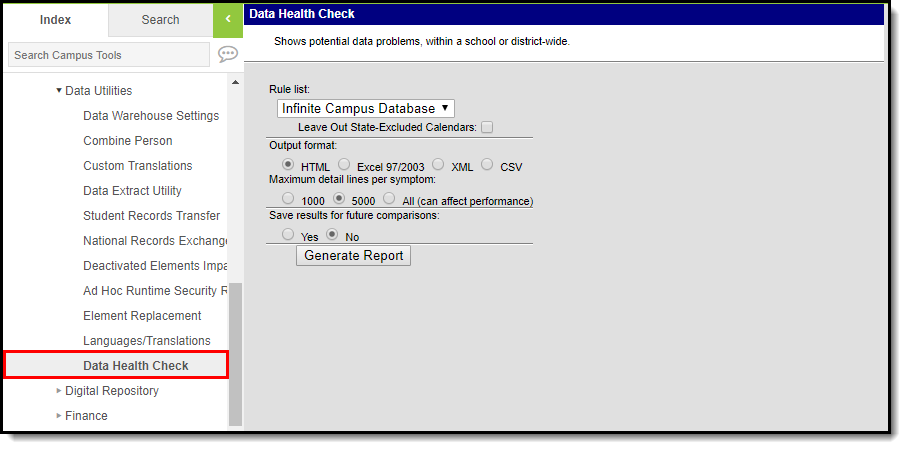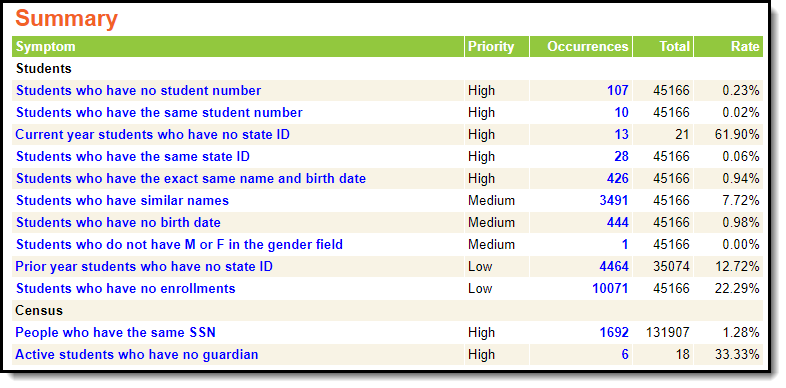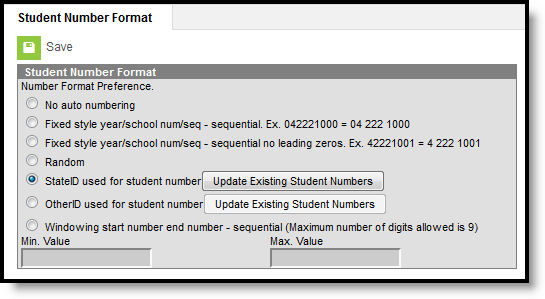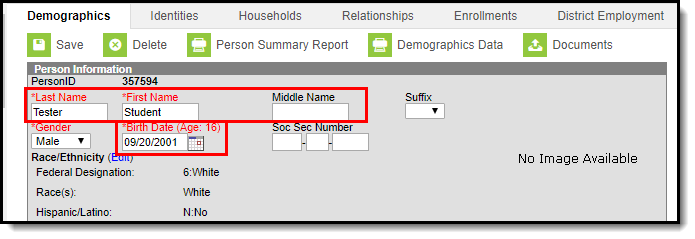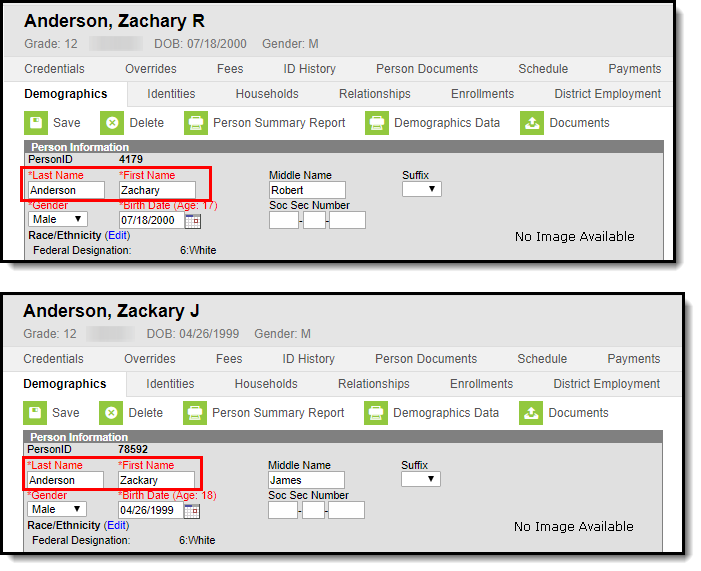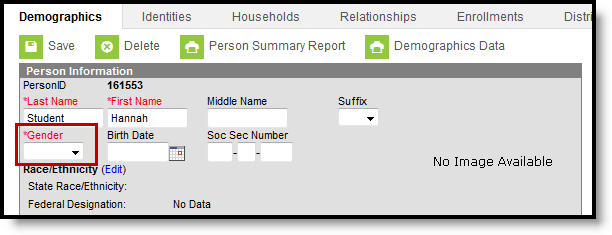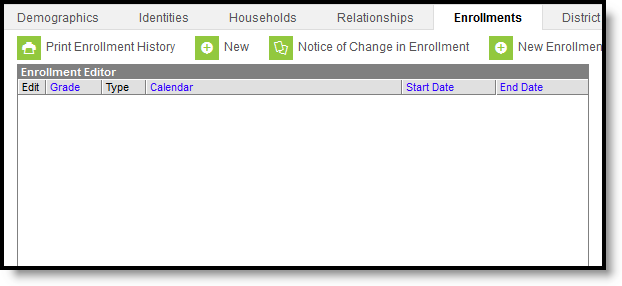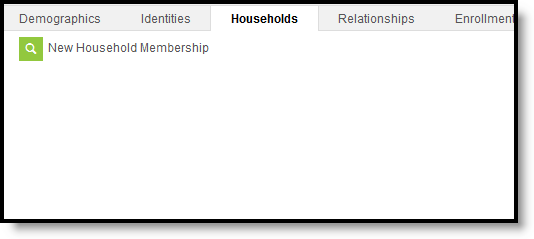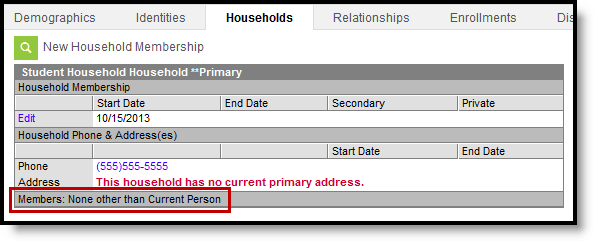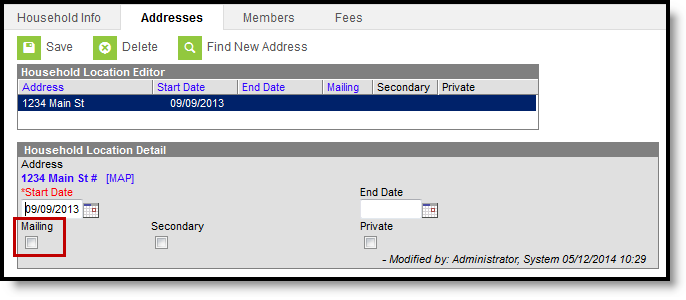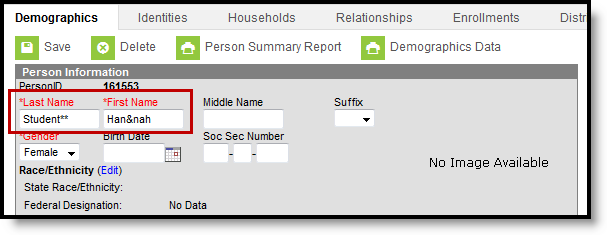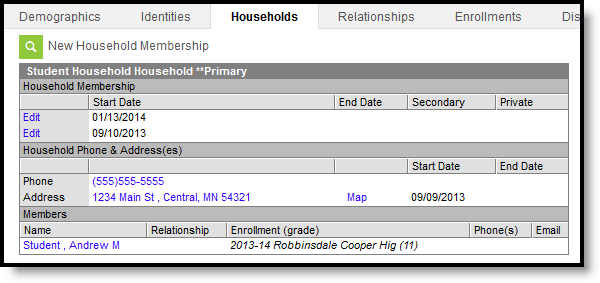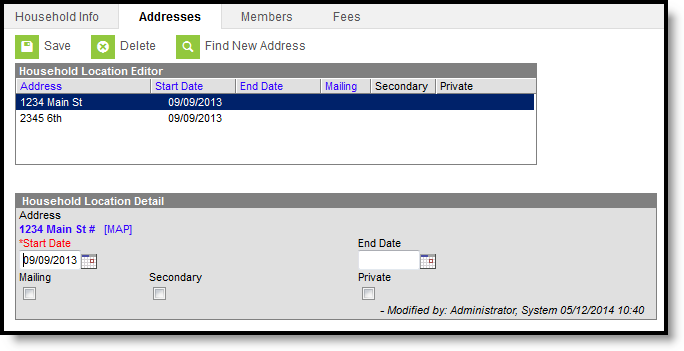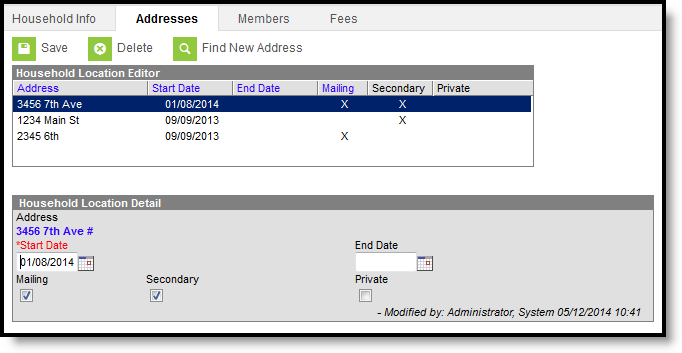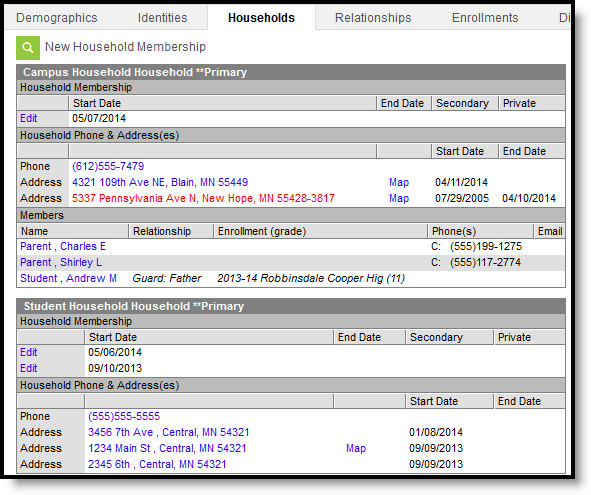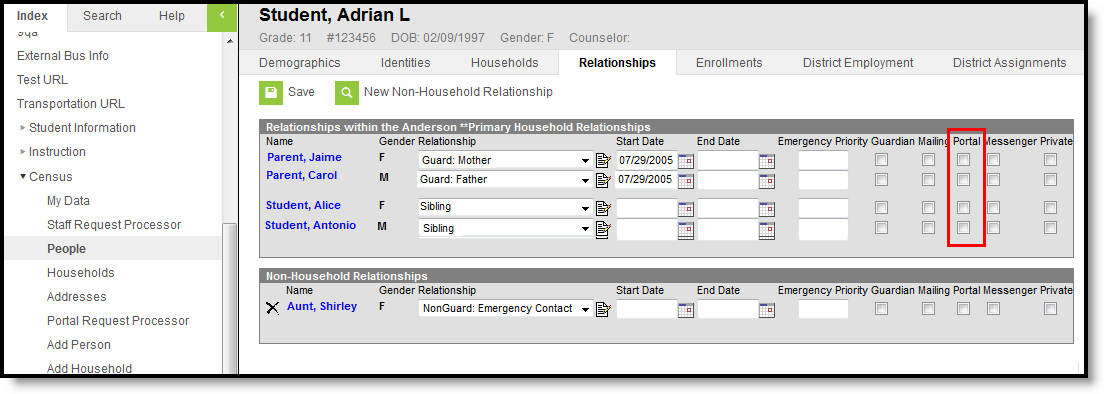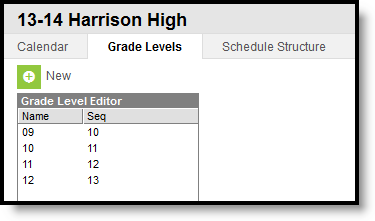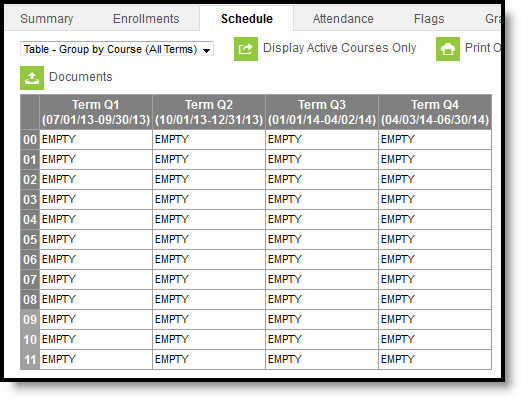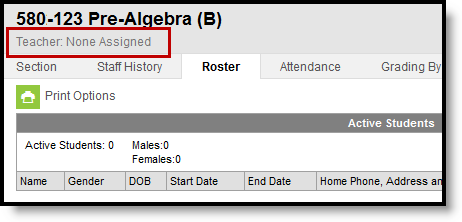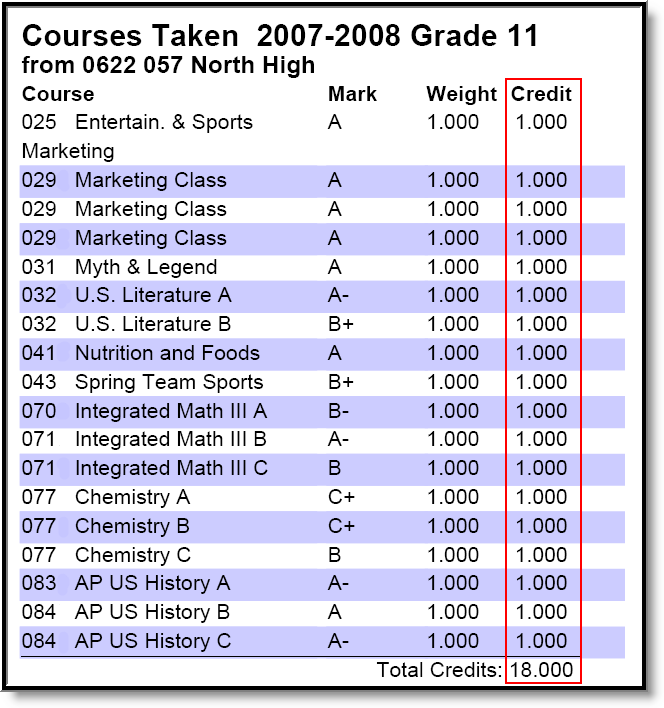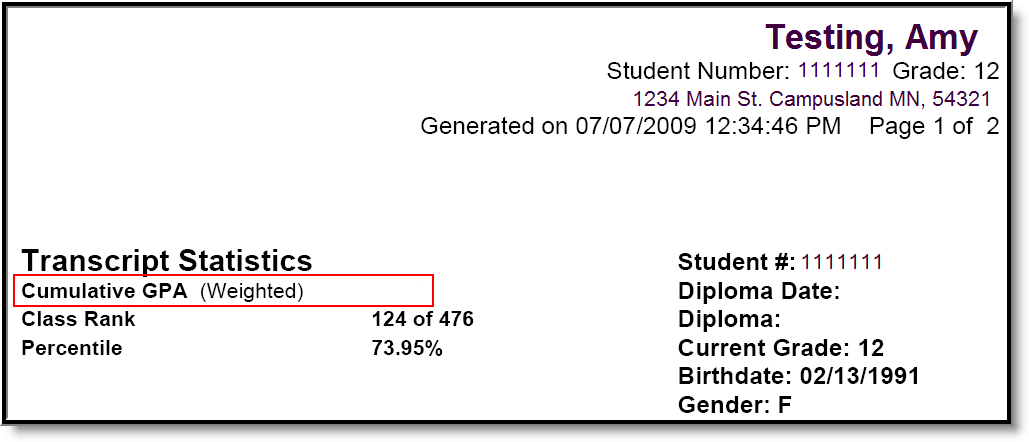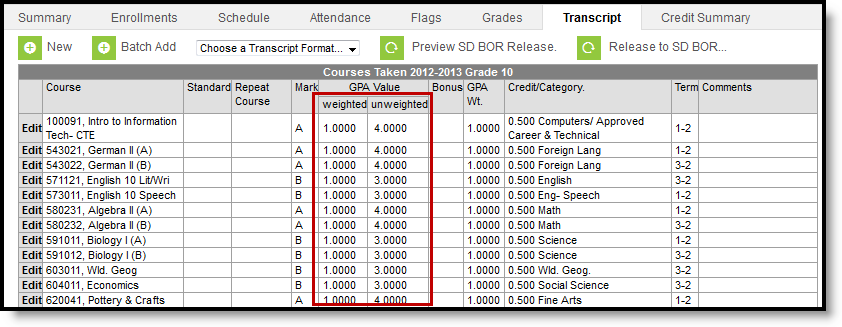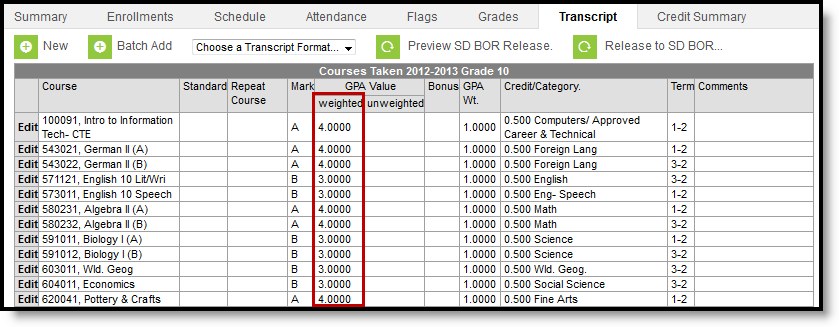This tool has been retired as of Campus.2339
Existing Data Health Check rule lists have been converted. Validation Groups will need to be added manually to the Data Validation Tool. Use the Data Health Check to Data Validations Checklist to transition to the Data Validations Report.
Tool Search: Data Health Check Report
This document provides information on the Data Health Check Report to be used on live districts already using Campus as well as during the implementation process of a new district.
For districts already using Campus, this report shows areas where data can be cleaned to ensure accuracy and increase overall data quality. For districts implementing Campus, this report is generated after every conversion to identify area of source system data cleanup as well as potential mapping rule changes needed by the conversion analyst for a successful implementation.
This tool is add-on functionality that is not enabled by default within Campus. Please contact Campus Support for more information on accessing and using this tool.
In this report, the following definitions are used:
- Student is defined as anyone who has an enrollment and/or a student number.
- Current year student is defined as anyone who has an enrollment record in a current or future year.
- Prior year student is defined as anyone who has an enrollment record before the current year.
- Scheduling rules look at information in the current year or the next year, not at past years.
The following tables define each summarized item:
Students
Item | Definition |
|---|---|
The student number field is null/blank when the person has an enrollment record. | |
Multiple persons who have the same student number. | |
Persons who have enrollment records in the current or future school year but have no state ID number assigned (state ID field is null or blank). | |
| Students who have the same State ID | Multiple person who have the same state ID number. |
| Students who have the exact same name and birth date | Identifies people with the exact same first and last name and birth date. |
| Students who have similar names | Identifies people with similar names (e.g., same first name and last name). |
| Students who have no Birth Date | Persons who have no birth date assigned (field is null/blank). |
Person who have invalid or no gender assigned. Invalid is any value other than M(ale) or F(emale). | |
Persons who have inactive enrollment records from past school years and the state ID field is blank. | |
Persons who have a student number but do not have any enrollments. |
Census
Item | Definition |
|---|---|
People who have identical Social Security numbers. | |
Persons who have enrollment records in the current year or future year and there is no current relationship to another person marked as guardian. | |
Persons who do not have a current membership in a household. | |
Person who has an enrollment record and a student number in his/her own household. | |
Persons who have enrollment records or a student number and do not have an address where mail can be sent. | |
Persons who have characters other than letters, spaces, dash (-), period (.), or apostrophe (') in their first, middle or last name. | |
People who do not have student numbers or enrollment records and have the same matching names as described above. | |
A family has more than 8 members assigned. This occurrence is often a result of a conversion error. | |
A family has more than one mailing address assigned. This is often a result of a conversion error. There should only be one primary address per household. | |
A family has more than one address to account for movement between two homes or for families with a mailing address and a different physical address. | |
| Households with More than Two Guardians | A household where more than two people are assigned as guardians of students in the household. |
People who have active memberships in two or more households. | |
| Contacts who have accessed the parent portal | Indicates all student contacts who have accessed their Campus Portal account. |
Scheduling
Item | Definition |
|---|---|
Enrolled student's grade level is not listed in the enrolled calendar. This happens when a user deletes a grade level in the Calendar. | |
Section placements are not marked on the section tab of a course. | |
A student is enrolled in a calendar but is not enrolled in any course sections. | |
Roster Record not in the Same Calendar as Student's Enrollment | Student is enrolled in a calendar with sections assigned and is moved to another calendar, causing orphaned section assignments. |
Student's age does not appear to match the student's grade level. This could indicate a mis-entered birth date. Listed age is based on the age of the student during the enrollment. | |
An active course section does not have a primary teacher assigned. | |
An active course section does not have any actively enrolled students. |
Transcripts
Item | Definition |
|---|---|
A student has a transcript record but does not have any earned or attempted credits listed. | |
A student's transcript record does not have a GPA | |
A student's GPA has an unweighted GPA value higher than the weighted GPA value. | |
A student's weighted GPA value is higher than the maximum GPA value. |
Behavior
Item | Definition |
|---|---|
Identifies current year behavior events with no behavior resolutions assigned. | |
Identifies prior year behavior events with no behavior resolutions assigned. |
Special Education (Sped)
Item | Definition |
|---|---|
Indicates current year students who have unlocked IEPs. | |
Indicates prior year enrollment records tied to unlocked IEPs. |
Audit Report Summary Section
The summary information lists high-level areas of concern where data may be incorrect. For historical purposes, results of past reports are also available if they exist.
Symptom Column
The Symptom column will display definitions when hovering over the name of the symptom. At the bottom of the Summary information, total percentages and assessment of the data will be viewable for each time the report was generated.
Priority Column
The Priority column is the level of attention a district should have based on the item to which it refers. The areas with a high priority should be reviewed first, followed by medium and low. To aid in this review, items are sorted by High, Medium and Low priority.
For example, a student with no student number is considered a severity level of high because this number is often used in state reporting extracts. A household with more than two addresses is considered a severity of low because a household may have a P.O. box and a street address.
All data in error should be reviewed for accuracy, regardless of the severity level.
Occurrences Column
The Occurrences column provides a total number of occurrences of each summarized item. An item with a value of zero indicates that issue does not exist and data is believed to be correct. Items with a number greater than zero indicates an issue with the data requiring review or for some instances (such as students with the same name, students with no enrollment records, etc), some data shows odd similarities or inconsistencies which should be reviewed to ensure accuracy.
The occurrences total is hyper-linked and will bring the user to the detail section of the report.
Total Column
The Total column provides a total number of records reviewed per symptom when generating the report.
Rate Column
This column indicates the total percentage of records per symptom that were flagged as an occurrence and may contain erroneous data. Another way to look at this is the estimated percentage of erroneous data per symptom.
Audit Report Detail Section
The detail section provides additional information on the summarized item. The detailed columns vary with each summarized item. If there are no errors listed in the Summary section of the report, the item will not be listed in the Detail section.
At any time, the user can select the Back to Summary link and return to the list of items included in the summary.
The following table provides the field names of the items listed in the report and related definitions:
Column | Definition |
|---|---|
Address Address 1 Address 2 | Location of where student resides. |
Birth Date | Date of birth for the person (student, parent, staff, etc). |
Calendar | Calendar of enrollment. |
Cell Phone | Person's cell phone number. |
City/State/Zip City/State/Zip 1 City/State/Zip 2 | Residence location for mailing purposes. |
Course | Class into which a student is enrolled, also referred to as section. |
Credit Type | Category of achievement (English, Mathematics, Technology, etc) to which a course is assigned. |
Credits Attempted | Total number of credits attempted by the student when enrolled in the course. |
Credits Earned | Total number of credits student earned by successful completion of the course. |
Enrolled Calendar | Calendar in which the student is enrolled. |
Enrolled School | School in which the student is enrolled. |
First Name | Legal first name of student, parent/guardian, staff, etc. |
Gender | Indication of person being either Male or Female. |
Grade | Grade level of enrollment. |
Home Phone | Designated phone number at residence. |
Household | Name of household. |
Last Name | Legal last name of student, parent/guardian, staff, etc. |
Max GPA | Maximum GPA that can be achieved by the student. |
Middle Name | Legal middle name of student, parent/guardian, staff, etc. |
Most Recent School | School in which student has the most recent enrollment record. |
Name | Name of individual, family, course section, etc. |
Phone Number | Contact number at home (usually). |
Roster Calendar (Enrolled) | Calendar in which the student is scheduled. |
Roster School (Enrolled) | School in which the student is enrolled. |
School | School of enrollment for the student. |
Section | Number of the course section. |
SSN | Federally assigned Social Security number. |
State ID | State-assigned identification number. |
Student Number | School- or district-assigned identification number. |
Term | Calendar section broken into parts - often a quarter, trimester, semester, etc. |
Unweighted GPA | GPA value with no additional points. |
Weighted GPA | GPA value with additional point. |
Year | Calendar year (2008-09, 2009, etc.). |
Student Symptoms
The following information is related to student data.
Students who have no Student Number
PATH: Student Information > General > Demographics > Person Identifiers > Local Student Number
The Student Number is a unique identifying number assigned to each student in a school/district. It is used within Campus primarily for tracking and state reporting purposes.
The student number will stay with the student for his/her tenure in the district even if he/she moves from school to school.
Student who have the Same Student Number
PATH: Student Information > General > Demographics > Person Identifiers > Local Student Number
Duplications of student numbers will cause issues in state reporting, student searches and syncing. Data integrity is lost when multiple students have the same number.
A system preference exists that will automatically assign a student number for newly enrolled students. Having this preference enabled reduces future issues with duplicate student numbers.
Current year students who have no State ID
PATH: Census > People > Demographics > Person Identifiers > Student State ID
State IDs are assigned to each student and are historically maintained. Departments of education typically assign this number, as it is used extensively in state reporting. All students should have a state ID.
Students who have the same State ID
PATH: Census > People > Demographics > Person Identifiers > Student State ID
Multiple students cannot share the same state ID, as this number is used extensively in state reporting and duplicates will cause a variety of data integrity issues.
If two different students share the same number, clarification should be made by the appropriate department of education. If the same student exists within Campus twice, the Combine Student Wizard may be used to combine the two records into one.
A preference exists that will automatically assign a state ID number for newly enrolled students (System Administration > Preferences > Student Number Format).
Students who have the exact same name and birth date
PATH: Census > People > Demographics > Person Information > Last Name, First Name, Birth Date
In large districts, it is entirely possible to have students with the same name and birth date. However, it is necessary to review these individuals for accuracy. While these students may have the same name birth date, other issues may be causing the duplication (e.g., different student numbers, different state ID numbers).
Students who have similar names
PATH: Census > People > Demographics > Person Information > Last Name, First Name
It is important to ensure students with similar names are not in fact the same person incorrectly duplicated within Campus. Duplicated students can impact state reporting data and confuse who and how data is stored between the students.
Students who have no Birth Date
PATH: Census > People > Demographics > Birth Date
Birth Dates are required information for students. This information is used in state reports, learner planning information and immunization records.
Students who do not have M or F in the gender field
PATH: Census > People > Demographics > Person Information > Gender
The gender field is required for students. Invalid errors indicate the gender value is blank or null.
Prior year Students who have no State ID
PATH: Census > People > Demographics > Person Identifiers > Student State ID
Inactive students are not currently enrolled in a school or calendar. These students may have attended for a few days during the converted school year or ended their enrollment.
Students who have no Enrollments
PATH: Census > People > Enrollments
Persons entered into Campus fall into three categories, students, staff and persons. The differentiating factor is the existence of a student number (which turns a person into a student) and a staff number (which turns a person into a staff member).
When a student has a student ID number there is usually an accompanying enrollment record. If there is a student number but no enrollment record, an error may be displayed.
Census Symptoms
The following information relates to Census data.
People who have the same Social Security Number
PATH: Census > People > Demographics > Person Information > Social Security Number
Social Security numbers are identifiers for individuals born in or working in the United States. Legitimate duplication of social security numbers is possible but not common. This error usually is a result of the duplication of an individual within the system or data entry error.
Active Students who have no Guardian
PATH: Student Information > General > Relationships
Guardian relationships allow parents and guardians to have access to their children's information, particularly through the Portal. Several student reports and mailing reports rely on the guardian information to generate.
Students should have at least one guardian.
Active Students Not in a Household
PATH: Student Information > General > Households
Households are useful in establishing guardian and sibling relationships. As with guardian information, students not in a household may be missing from reports, causing items to not generate.
Active Students in Households by Themselves
PATH: Census > Household > Members
For general household creation, a student should not be in a household without a guardian. There are instances where a student may be an emancipated minor, a foster child or have other extenuating circumstances. However, as a standard practice, a student should be part of a household with at least one guardian assigned.
Image 18: Household Members
Active Students who do not have a Mailing Address
PATH: Census > Households > Addresses
Mailing addresses are used to send information to students' homes and are therefore useful in school/parent communication. Mailing addresses should be established; doing so will ensure the parent/guardian receives all information that is mailed.
People who have unusual characters in their names
PATH: Census > People > Demographics > Last Name, First Name, Middle Name
Names normally can have letters, spaces, dashes (-), periods (.) or apostrophes (') in them. Characters other than these could have been entered in error.
Contacts who have the Same Name
PATH: Census > People > Demographics > Households
Persons noted as contacts within a household who have the same name as another contact should be reviewed for duplicate entry. This information is used when viewing census data for complete information on a student.
Households with More than Eight Members
PATH: Census > Household > Members
A household can have as many members as needed to list all people that live in the house/building. However, it is suggested that households with a large number of people be reviewed for accuracy.
Households with More than One Primary Mailing Address
PATH: Census > People > Demographics > Households > Addresses
Campus allows households to have more than one address to account for movement between two homes or for a mailing address and a physical address (P.O. Box and non-P.O. Box addresses).
However, only one address can be marked as the primary dwelling of the household. Primary addresses are used in reports and are the main source of contact for a student.
Households with More than Two Addresses
PATH: Census > People > Demographics > Households > Addresses
Campus allows households to have more than one address to account for movement between two homes or for a mailing address and a physical address (P.O. Box and non-P.O. Box addresses).
Households with More than Two Guardians
PATH: Census > People > Demographics > Relationships
Students can have more than two guardians to accommodate non-traditional families, but these entries should be reviewed for errors.
People in more than One Household
PATH: Census > People > Households
A person, whether a student, staff person or guardian, can be in more than one household. This flexibility provides for easy maintenance of complex family structures. However, this should be reviewed for accuracy as mis-entry is possible.
Contacts who have accessed the parent portal
PATH: Campus Parent Portal; Census > People > Relationships > Portal
This report lists all student contacts who have accessed their Campus Parent Portal account. In order for a contact to access the Parent Portal for a student, they must have a Portal account created for them and be marked as Portal on the Relationship record of the student.
Scheduling Symptoms
The following information relates to Scheduling data.
Student's Grade Level not Found in Calendar
PATH: System Administration > Calendar > Grade Levels
This error occurs when newly imported student enrollment information has not yet been mapped to existing grade levels within that calendar. Student's grade levels should be changed to fit the calendar within which they are enrolled.
Grade levels can be deleted from the calendar when an enrollment exists with that deleted grade level. The enrollment record will not have a grade level assigned.
Sections with No Schedule
PATH: Scheduling > Courses > Section > Section Schedule Placement
Course sections are scheduled into already established schedule structures. This report details the course sections that do not have designated meeting times within the school day.
Students Enrolled with no Schedule
PATH: Student Information > General > Schedule
This section pulls students who have an active enrollment but are not scheduled into any course sections. Review the student information to ensure it is a current student. If it is a current student, add the necessary course sections.
Roster Record not in the Same Calendar as Student's Enrollment
PATH: Student Information > General > Enrollments
This error occurs when a student is enrolled in a calendar and scheduled into course sections, but is moved to another calendar, causing orphaned section assignments.
Discrepancy Between Age and Grade Level
PATH: Census > People > Demographics; Student Information > General > Enrollments
It is a general assumption that students in a certain grade level are between a certain age (kindergarten students are 5 or 6). The existence of this error indicates students are either below the general age range or over the general age range for the grade level into which the student is enrolled.
Age is a calculated field based on the entered birth date.
Section with no Teachers
PATH: Scheduling > Courses > Sections > Roster
When a section of a course does not have a primary teacher assigned to it, the section will appear in this report.
Sections with no Students
PATH: Scheduling > Course > Section > Roster
This section provides a list of course sections that do not have any students scheduled in them.
Transcript Symptoms
The following information relates to Transcript data.
Transcripts without Credits
PATH: Student Information > General > Transcript > Choose a Transcript Format > Default
Credits earned are displayed on student transcripts. Accurate representation of credits earned is a primary functions of the transcript.
Transcript without GPA Values
PATH: Student Information > General > Transcripts > Choose a Transcript Format > Default
This error indicates the GPA value calculated after successful passing of a course to be posted on a student's transcript is not appearing.
Unweighted GPA Value Higher than Weighted
PATH: Student Information > General > Transcript
Weighted grades allow more difficult courses to have a greater impact on a student's overall GPA. Therefore, weighted values should be higher than unweighted values. Otherwise, the value of earned credits is decreased.
Weighted GPA Value Higher than Max
PATH: Student Information > General > Transcript
The GPA value is higher than the maximum allowed GPA value. This may be correct if the school awards additional GPA points for students in accelerated courses (e.g., AP), but it should be verified.
Behavior Symptoms
The following information relates to Behavior data.
Current year events without resolutions
PATH: Behavior > Behavior Management
It is important to review current year active behavior events that have not yet been assigned a behavior resolution. These events are considered open and unresolved and may be missing resolution information.
Prior year events without resolutions
PATH: Behavior > Behavior Management
It is important to review prior year active behavior events that have not yet been assigned a behavior resolution as these events could very well be missing resolution data and have not been properly closed.
Special Education (Sped) Symptoms
The following information relates to Special Education data.
Current year enrollments that have unlocked IEPs
PATH: Student Information > Special Ed > General > Documents > IEP
Once a Special Ed plan or evaluation is complete, the IEP should be locked to prevent additional modifications. It is important to review existing unlocked IEPs and lock any of those that no longer require modification.
Prior year enrollments that have unlocked IEPs
PATH: Student Information > Special Ed > General > Documents > IEP
It is important to review existing unlocked IEPs and lock any of those that no longer require modification. This is especially true of prior year enrollment IEPs as they have been unlocked for a long period of time, indicating a strong likelihood these IEPs should be locked.
